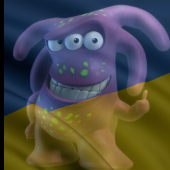-
Posts
28677 -
Joined
-
Last visited
-
Days Won
314
Community Answers
-
Squid's post in Wrong Disk - New Server was marked as the answer
Did you also move the RAID card over or did the new server have a RAID onboard and you then created a new JBOD arrays with it.
RAID cards don't report the true serial numbers of the drives and basically append their own identifier to it. which is resulting in the system not identifying the drives as they were before.
You should do a Tools - New Config. Then reassign all the drives into their appropriate places (make note of which is parity and which is data). You can also check off parity is already valid, but you should run a parity check regardless.
-
Squid's post in Something really wrong went on during force_update was marked as the answer
Sans diagnostics, you're probably out of space in /tmp on the system. A reboot is going to be necessary to recover.
Are you using Plex and transcoding to RAM (/tmp). Plex (as per usual) is a PITA and has a nasty habit of never deleting it's temporary transcode files until playback is finished which means that /tmp can quite easily (and quite quickly) fill up
-
Squid's post in Docker Images 'gone/missing' after 6.10.3 to 6.11.5 update was marked as the answer
Because the folder /config/plugins/dockerMan/templates-user is corrupted and/or everything is deleted from it. This is not anything (at all) related to the upgrade.
What is the contents of that folder?
-
Squid's post in Your flash drive is corrupted or offline. Post your diagnostics in the forum for help. was marked as the answer
Your flash.cfg file is trashed. This is the contents
¹Él8û¶ÖÓ[³Šx`Ũ»¦¢ÇAp øÂgÖïöÇ j\(ÝYá,™:Ô³¢¿,ãcÒ±¢/X$®‚e\‘ø÷2›…¶I,„^!ܑkdÊ°5pã(ÛåêÃ¥ ì†+M6O E7ÌËÿxjI\Yð‡L
Delete /config/flash.cfg and then reboot
If problems continue, replace the flash drive
-
Squid's post in Does it matter if there's a "gap" in my drive list? was marked as the answer
Gaps are fine and don't affect anything at all
-
Squid's post in How can I free up Docker memory/cache? was marked as the answer
Try changing the size of the image to 20G. Possibly overhead etc involved in updating on the image
-
Squid's post in Upgrading from 6.3.2 / 6.3.5 to 6.11.5. Going round in circles. was marked as the answer
Apps and FCP are only compatible with 6.9.0+
The URL you're trying to use is ancient and outdated.
Download the zip file from https://unraid.net/download
Make a backup of your flash drive
Extract all of the bz* files from the archive and put them onto the root of the flash
Turn your server back on
-
Squid's post in How to schedule the execution of a docker container the right way ? was marked as the answer
User scripts plugin
docker start nameOfContainer
and
docker stop nameOfContainer
-
Squid's post in Docker "stop timeout" option not applying on server reboot was marked as the answer
It's listed now on an internal bug report, but there's also currently major coding changes happening on the WebUI and the major plugins so it also may get lost in the shuffle for a bit.
-
Squid's post in My Servers cant view docker web ui was marked as the answer
Are you doing this remotely.
Multiple problems (and not an easy solution) with doing this and something I brought up a few years ago.
Your best bet is to actually either use a real reverse proxy with appropriate forwarding for your apps (eg: SWAG), or alternatively create a barebones VM that uses VNC. The VNC VM is accessible remotely via MyServers and from it's browser you can then access any of the docker containers installed.
-
Squid's post in Folder Permissioning issues on Unraid was marked as the answer
No fundamental reason why it wouldn't work off of that docker run command issued. Run the New Permissions from Tools against the share and see if anything changes
If it doesn't then instead of mapping /mnt to /mnt change it to map instead /movies to /mnt/user/unraid/bluray/ and rebuild the library looking for files in /movies
Mapping /mnt to /mnt has never been particularly recommended (although its a convenient shortcut) as it is a security risk as now emby has complete read/write access to not only your media, but also any banking info on your server, the "special" pictures you keep etc etc
-
Squid's post in Has my server been hacked was marked as the answer
The "anonymous" means that the author (in this case myself) couldn't be bothered to name a script that gets executed during installation. Hence, the script is "anonymous"
Normal, expected and not an issue
-
Squid's post in Download of appfeed failed error ( after clicking Apps tab) was marked as the answer
Your date & Time is completely out to lunch which definitely affects transfers
Set it up akin to this
-
Squid's post in Users cannot log in, only root was marked as the answer
Only "root" has access to the WebUI. By design
-
Squid's post in UPS Settings wont load was marked as the answer
If anything, you can try renaming /config/plugins/dynamix.apcupsd/dynamix.apcupsd.cfg on the flash drive and then try it again
-
Squid's post in I'm having random system crashing errors, I think due to a bad memory stick? How can I diagnose? was marked as the answer
Bad stick. Your system event log may have more information beyond channel 0, dimm 0
-
Squid's post in Fix common problem error - Invalid folder cache contained within /mnt was marked as the answer
Do a rescan with FCP. That folder (users) was there when it last ran....
-
Squid's post in Changes to Docker default values lost at every update? was marked as the answer
By design, templates also update with any updates to the container. This results in any variables etc that are missing from your template being added back in (not changed)
What you've done is take an existing template and delete entries (which is fine)
Manually edit the file at /config/plugins/dockerMan/templates-user and remove the line saying <TemplateURL>....</TemplateURL> to stop the system from updating the template.
-
Squid's post in How do I see the docker run command that Unraid will use associated with a particular container? was marked as the answer
Stop the docker service (Docker Tab).
Enable Template Authoring Mode
Now when you're on the template screen there will be an addition button named "Save" Clicking it will show both the generated XML and the docker run command that would be issued
-
Squid's post in Machine check error event after server crash was marked as the answer
Top of my head, the mce is because of the microcode update being issued to the CPU and is probably no issue
Nov 19 16:35:03 Punisher kernel: microcode: CPU0: patch_level=0x08701021 Nov 19 16:35:03 Punisher kernel: microcode: CPU1: patch_level=0x08701021 Nov 19 16:35:03 Punisher kernel: microcode: CPU2: patch_level=0x08701021 Nov 19 16:35:03 Punisher kernel: microcode: CPU3: patch_level=0x08701021 Nov 19 16:35:03 Punisher kernel: microcode: CPU4: patch_level=0x08701021 Nov 19 16:35:03 Punisher kernel: microcode: CPU5: patch_level=0x08701021 Nov 19 16:35:03 Punisher kernel: microcode: CPU6: patch_level=0x08701021 Nov 19 16:35:03 Punisher kernel: microcode: CPU7: patch_level=0x08701021 Nov 19 16:35:03 Punisher kernel: microcode: CPU8: patch_level=0x08701021 Nov 19 16:35:03 Punisher kernel: microcode: CPU9: patch_level=0x08701021 Nov 19 16:35:03 Punisher kernel: microcode: CPU10: patch_level=0x08701021 Nov 19 16:35:03 Punisher kernel: microcode: CPU11: patch_level=0x08701021 Nov 19 16:35:03 Punisher kernel: microcode: Microcode Update Driver: v2.2. Nov 19 16:35:03 Punisher kernel: IPI shorthand broadcast: enabled Nov 19 16:35:03 Punisher kernel: sched_clock: Marking stable (11946833916, 343487151)->(12438976477, -148655410) Nov 19 16:35:03 Punisher kernel: mce: [Hardware Error]: Machine check events logged Nov 19 16:35:03 Punisher kernel: registered taskstats version 1 Nov 19 16:35:03 Punisher kernel: mce: [Hardware Error]: CPU 0: Machine Check: 0 Bank 27: faa000000000080b Nov 19 16:35:03 Punisher kernel: mce: [Hardware Error]: TSC 0 MISC d012000800000000 SYND 5d000000 IPID 1002e00000500 Nov 19 16:35:03 Punisher kernel: mce: [Hardware Error]: PROCESSOR 2:870f10 TIME 1668897207 SOCKET 0 APIC 0 microcode 8701021
-
Squid's post in Persist PHP Settings Across Unraid Reboot was marked as the answer
Unraid runs from RAM and the files are unpacked from the flash drive.
To make any changes persistent, you must reapply them via an appropriate script either via the user scripts plugin or via the "go" file (/config/go) on the flash drive
-
Squid's post in Docker Mount file to replace file in docker.img was marked as the answer
Go to /var/lib/docker That's where the image (or folder) ultimately resides
But you might find it easier to simply go to the console of the individual container via the webGUI rather than sorting out all of the various layers etc within the docker subsystem.
-
Squid's post in remove disk from middle of array? was marked as the answer
Referencing everything by the user shares (/mnt/user/...) the system will sort it all out by itself.
Even if for some reason you directly reference the share by disk (/mnt/disk7/...) then you can either adjust the references or simply assign the disks to the same slot. Nowhere does the system force you to have disk4, and the OS is perfectly happy having disks1-3 and disks 5-7 assigned with 4 unassigned
-
Squid's post in Repetative Log Error "failed parsing crontab for user root" was marked as the answer
You probably entered in a custom value into the settings for mover tuning and there's a syntax error you made there.

